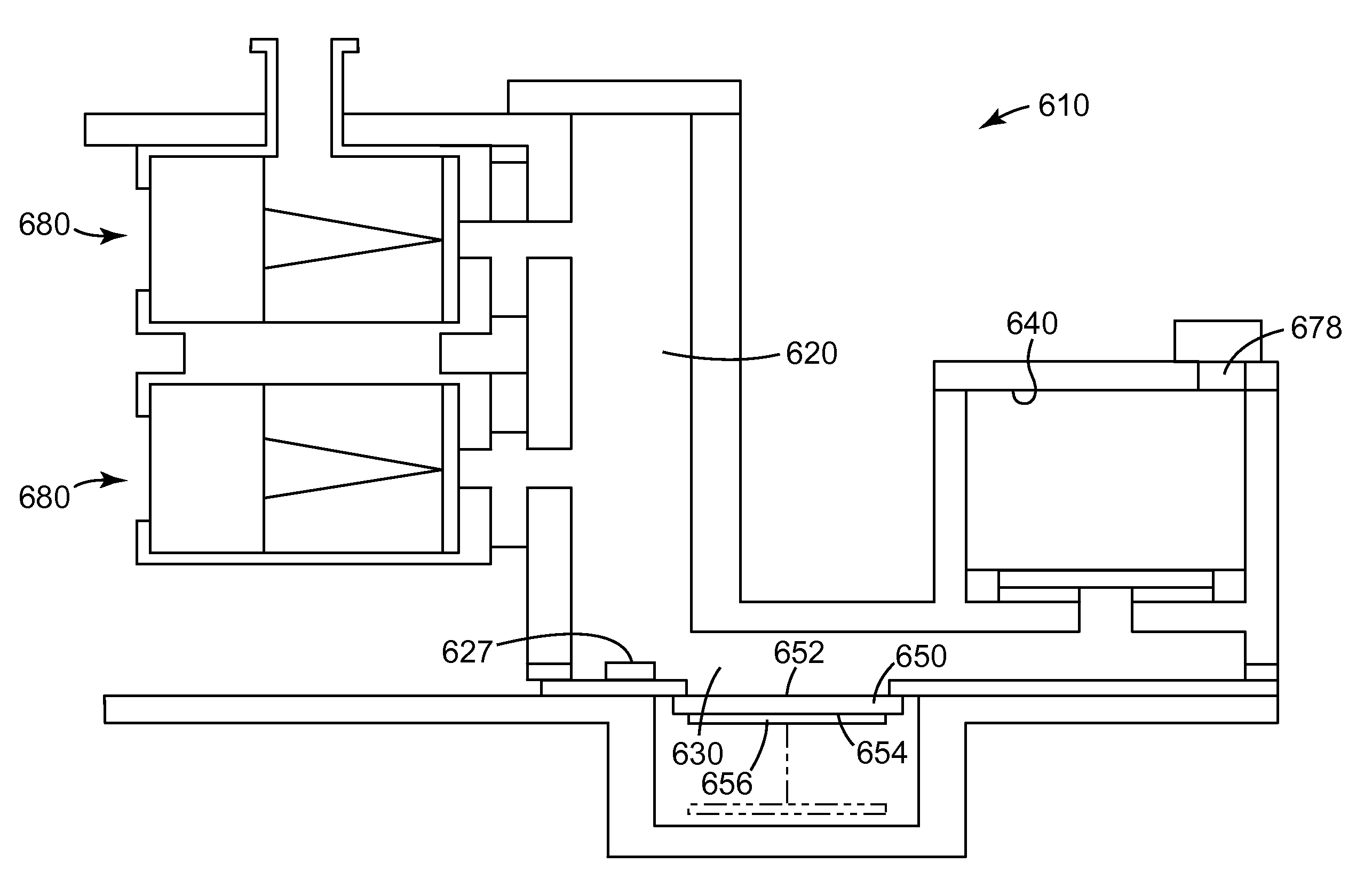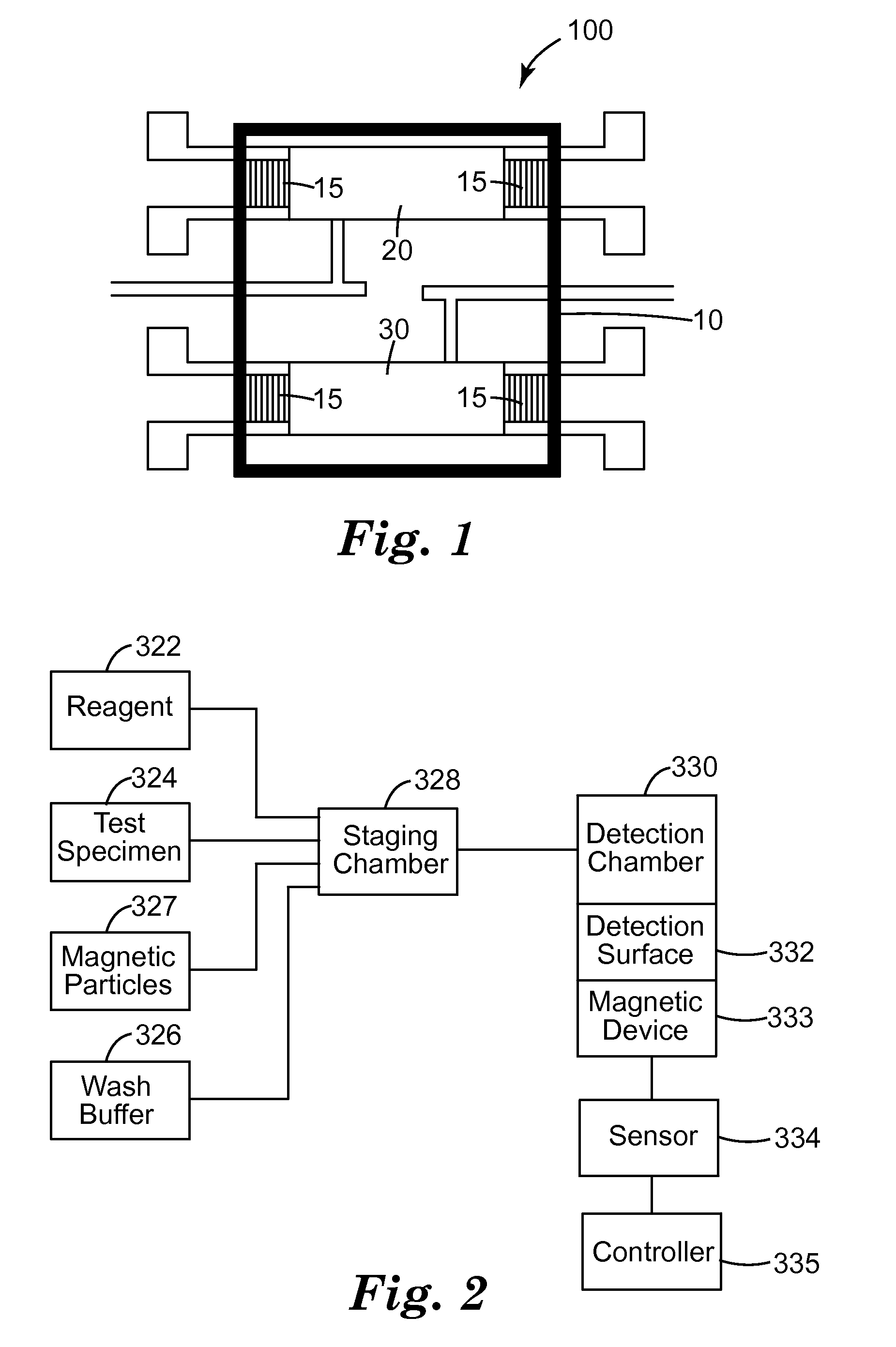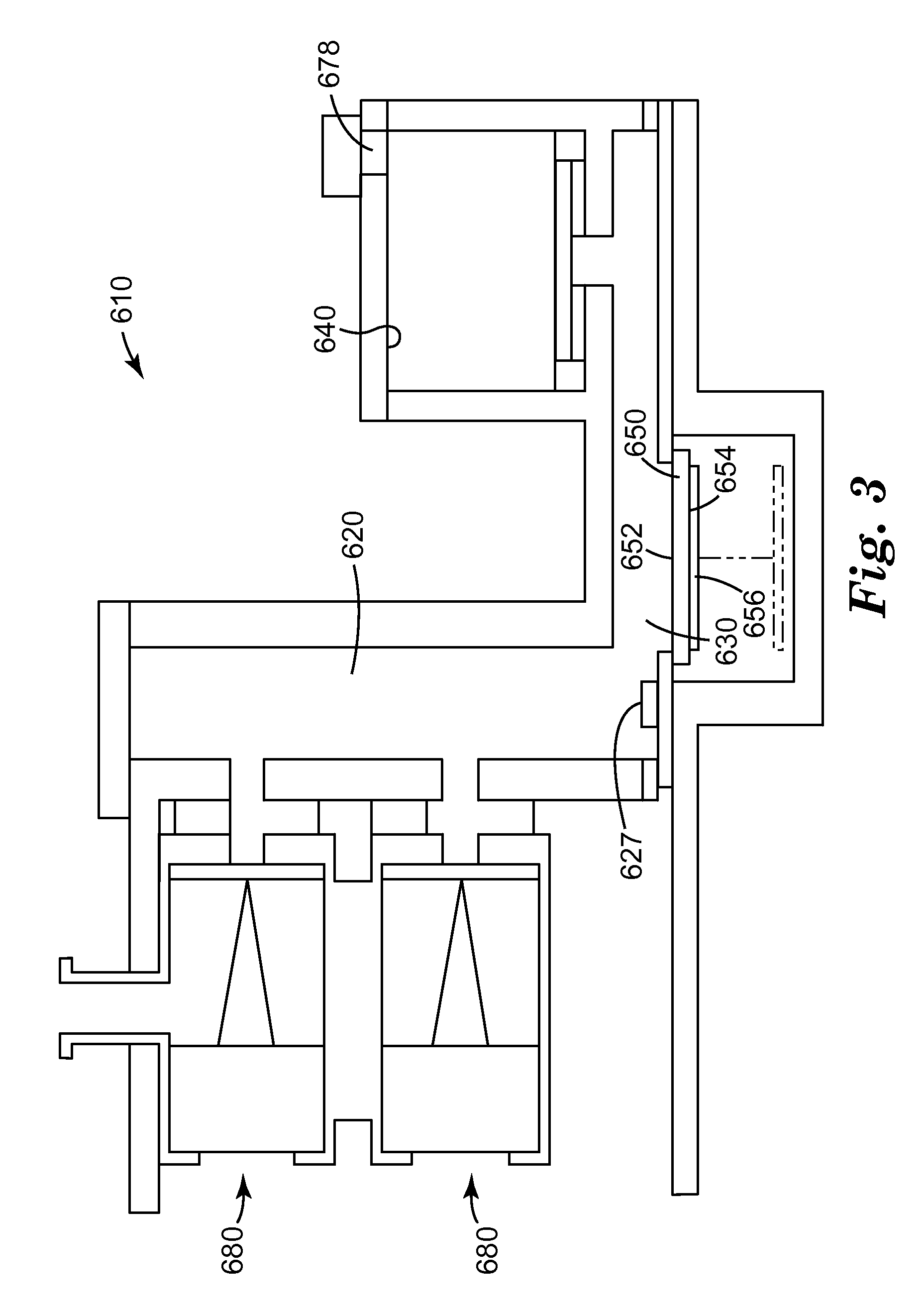Methods of detection using acousto-mechanical detection systems
a detection system and acoustomechanical technology, applied in the field of acoustomechanical sensors, can solve the problems of sensor limitations, liquid carrier may undesirably reduce the sensitivity of the acoustomechanical detection system, and raise issues, so as to enhance the detection of target biological analytes and improve the detection limit
- Summary
- Abstract
- Description
- Claims
- Application Information
AI Technical Summary
Benefits of technology
Problems solved by technology
Method used
Image
Examples
example 1
Methods of Preparing Sensors and Running Detection Experiments
[0109]A shear-horizontal surface acoustic wave (SH-SAW) sensor (supplied by Com Dev (Cambridge, Ontario, Canada) or by Sandia National Laboratory (Albuquerque, N. Mex.)) spin coated with a waveguide (50:50 copolymer of methyl methacrylate and isobornyl methacrylate prepared as described in Example W1 of PCT Publication No. WO2005 / 066092 titled “Acoustic Sensors and Methods”, filed on Dec. 17, 2004) was used in the experiments. The sensors were sprayjet-coated with an immobilization chemistry comprising a terpolymer of iso-bornyl methacrylate / methyl methacrylate / Saccharin-methacrylate / acryloyloxybenzophenone 35 / 35 / 30 / 0.5 made in Butyl acetate / Acetonitrile 50 / 50 prepared as described in Example MP26 of PCT Publication No. WO2005 / 066092 titled “Acoustic Sensors and Methods”, filed on Dec. 17, 2004. In some cases, a monoclonal antibody (Mab107) specific to Protein A was hand coated or sprayjet-coated on both (active and refer...
example 2
Conjugation of Protein A-Biotin to Magnetic Particles
[0116]Biotin-conjugated Protein A was obtained from Sigma Chemical Company (St. Louis, Mo.). Streptavidin-coated magnetic particles, obtained from either Invitrogen (Carlsbad, Calif.) or Chemicell Gmbh (Berlin, Germany), were pre-washed in 1 ml Phosphate-buffered Saline (PBS, 137 mM NaCl, 2.7 mM KCl, and 10 mM phosphate, pH 7.40). The magnetic particles and the Protein A-biotin test sample were mixed together at the desired concentrations in 1 ml PBS. The suspension was incubated at 37° C. for ≧30 min (with agitation). The sample was then washed three times in 1 ml PBS to remove any unbound target. The washing process consisted of placing a magnet against the sample tube to immobilize the magnetic particles against the wall of the tube, removing the supernatant, adding an equal volume of fresh PBS and resuspending the particles. For the final wash, the particles were resuspended in 1 ml PBS L64 buffer (PBS buffer containing 0.2% w...
example 3
Conjugation of Protein A Through the Mab107-biotin to Magnetic Particles
[0117]Mab 107 was biotinylated using the EZ-Link NHS-PEO4-Biotin kit (Pierce, Rockford, Ill.) according to the manufacturer's instructions. Protein A was obtained from Invitrogen and was diluted in PBS to the desired test concentration. Streptavidin-coated magnetic particles and biotinylated—Mab 107 antibody were mixed together at the desired concentrations and incubated at 37° C. for ≧1 hr in PBSL buffer. The sample was then washed three times in PBSL buffer to remove any unbound antibody. At the end of the last wash step, the particles were resuspended in 1 ml of the Protein A test sample in PBSL buffer, and incubated at 37° C. for 30 minutes.
PUM
 Login to View More
Login to View More Abstract
Description
Claims
Application Information
 Login to View More
Login to View More - R&D
- Intellectual Property
- Life Sciences
- Materials
- Tech Scout
- Unparalleled Data Quality
- Higher Quality Content
- 60% Fewer Hallucinations
Browse by: Latest US Patents, China's latest patents, Technical Efficacy Thesaurus, Application Domain, Technology Topic, Popular Technical Reports.
© 2025 PatSnap. All rights reserved.Legal|Privacy policy|Modern Slavery Act Transparency Statement|Sitemap|About US| Contact US: help@patsnap.com



